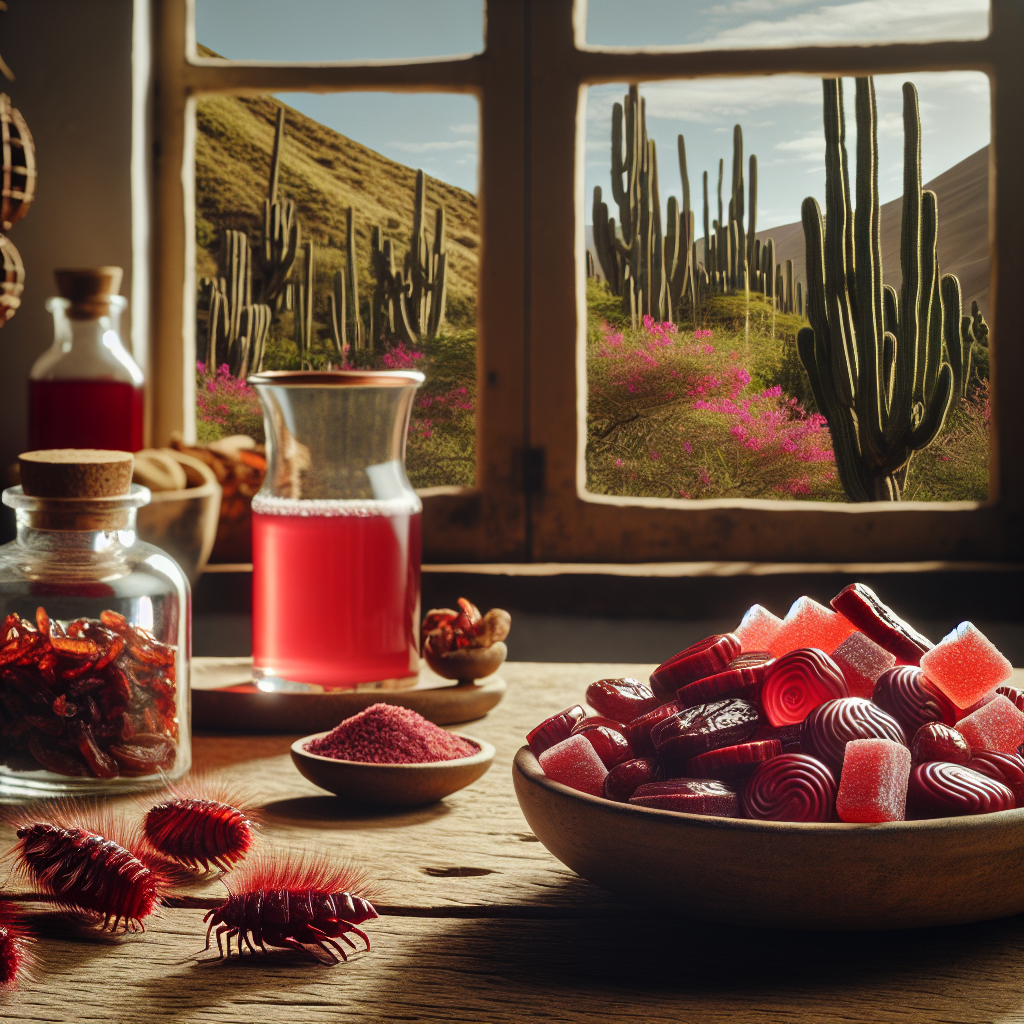RFK Jr.’s Push to Eliminate Petroleum-Based Artificial Food Dyes
The debate surrounding artificial food dyes has gained considerable momentum, particularly with the recent advocacy of Robert F. Kennedy Jr. (RFK Jr.), a prominent environmental activist. His campaign emphasizes the elimination of petroleum-based artificial food dyes, sparking a potential shift in the food industry towards alternative sources. This article explores the implications of RFK Jr.’s initiative and the potential transition to natural colorants sourced from tiny bugs in Peru.
The Case Against Artificial Food Dyes
Artificial food dyes, commonly derived from petroleum, have become a staple in the food industry, responsible for enhancing the visual appeal of numerous products. However, growing concerns regarding their safety have led to increased scrutiny. Some of the primary issues associated with these dyes include:
1. Health Risks: Studies suggest a potential link between artificial food dyes and various health issues, including hyperactivity in children and allergic reactions.
2. Environmental Impact: The production of petroleum-based dyes contributes to environmental degradation, including pollution and resource depletion.
3. Consumer Demand for Transparency: As consumers become more health-conscious and environmentally aware, there is a rising demand for transparency in food labeling and ingredient sourcing.
RFK Jr.’s push for eliminating these artificial dyes aligns with a broader societal movement towards cleaner, more natural food products. His advocacy highlights the need for regulatory changes and encourages manufacturers to reassess their ingredient choices.
The Transition to Natural Colorants
In response to RFK Jr.’s campaign, the food industry is exploring alternatives to artificial food dyes. One potential source gaining attention is natural colorants derived from insects, particularly a tiny bug known as the cochineal.
Cochineal: A Natural Colorant
Cochineal, specifically extracted from the cochineal beetle, has been used for centuries as a dye in various cultures. This natural colorant offers several advantages:
1. Vibrant Colors: Cochineal produces a range of vibrant hues, from reds to pinks, making it a viable alternative to synthetic dyes.
2. Natural Origin: Sourced from insects, cochineal provides a more environmentally friendly option, as it is biodegradable and does not contribute to petroleum consumption.
3. Consumer Acceptance: As consumers increasingly seek out natural ingredients, cochineal may become a popular choice for manufacturers aiming to meet consumer demand.
However, the transition to cochineal and other natural colorants is not without challenges. The sourcing and production processes must be carefully managed to ensure that they are sustainable and ethical.
Challenges of Sourcing Natural Colorants
While the shift towards natural colorants presents promising opportunities, several challenges must be addressed:
1. Supply Chain Issues: The availability of cochineal and other natural dyes can be limited, leading to potential supply chain disruptions.
2. Cost Considerations: Natural dyes may come at a higher cost than their synthetic counterparts, which could impact pricing for consumers and manufacturers alike.
3. Consumer Education: Many consumers may not be familiar with cochineal and its benefits. Educating them about the advantages of natural colorants is essential for a successful transition.
4. Regulatory Hurdles: The food industry operates under stringent regulations, and any new ingredient, including natural colorants, must undergo rigorous testing and approval processes.
RFK Jr. and the Future of Food Dyes
RFK Jr.’s advocacy is not merely about eliminating artificial food dyes; it represents a broader movement towards sustainable and health-conscious food production. The implications of his campaign could reshape the food industry, encouraging manufacturers to prioritize natural ingredients.
Potential Industry Impacts
1. Increased Research and Development: Companies may invest more heavily in R&D to find innovative natural alternatives to synthetic dyes.
2. Market Opportunities: As more consumers embrace natural products, brands that prioritize transparency and sustainability may find themselves at a competitive advantage.
3. Regulatory Changes: RFK Jr.’s efforts could lead to increased scrutiny of artificial dyes, prompting regulatory bodies to consider stricter guidelines and encourage the use of natural alternatives.
4. Consumer Awareness: Advocacy efforts can lead to greater consumer awareness regarding the ingredients in their food, driving demand for transparency and healthier options.
Conclusion
RFK Jr.’s push to eliminate petroleum-based artificial food dyes represents a significant shift in the food industry towards more natural solutions. As the movement gains traction, companies must navigate the complexities of sourcing natural colorants and overcome the challenges posed by traditional artificial dyes.
The journey towards a dye-free future may be fraught with obstacles, yet the potential benefits — for both public health and the environment — are compelling. As consumers become more educated and demanding, the food industry will need to adapt or risk falling behind in an increasingly conscious marketplace.
In the end, the evolution of food dyes may reflect a larger transformation in our relationship with food, paving the way for a future where health and sustainability take precedence over mere aesthetics. The question remains: will the industry rise to the challenge, or will it cling to outdated practices? Only time will tell.



